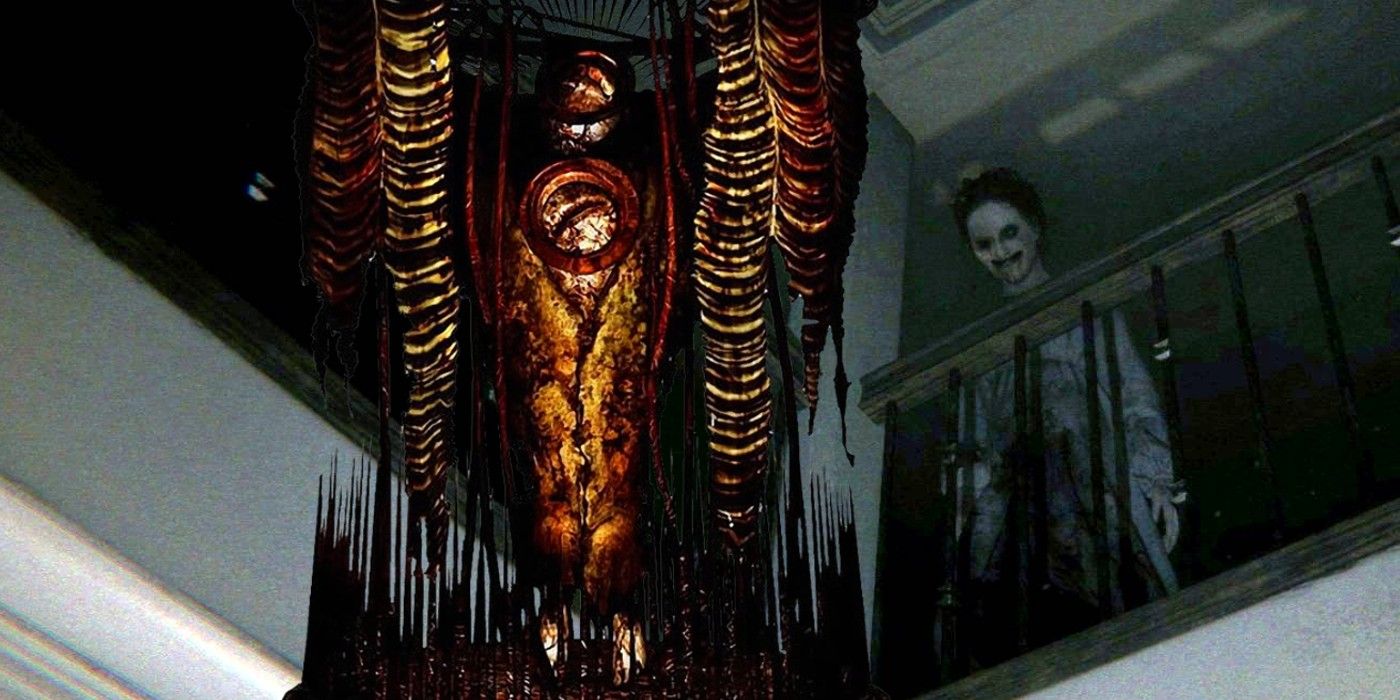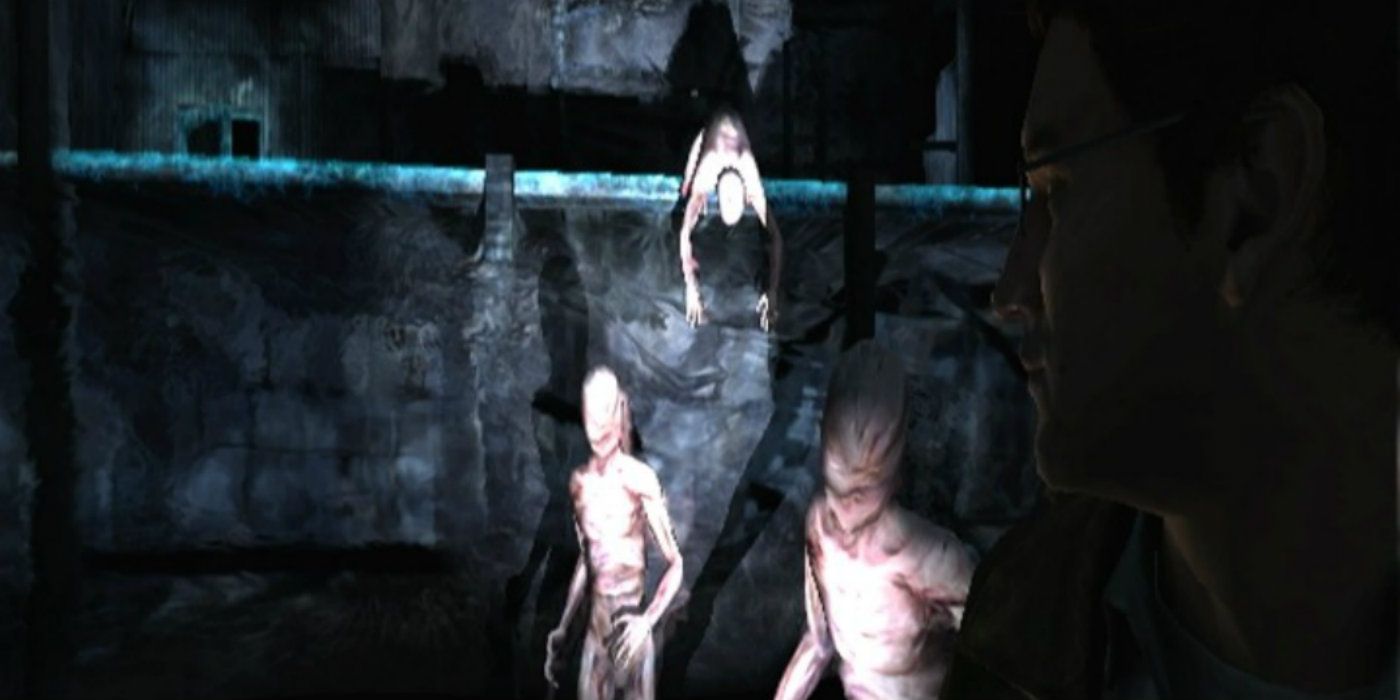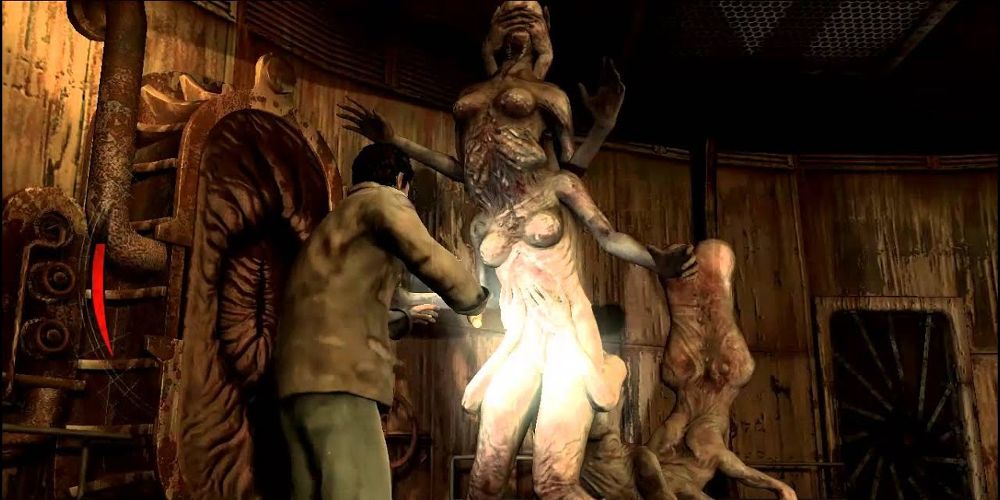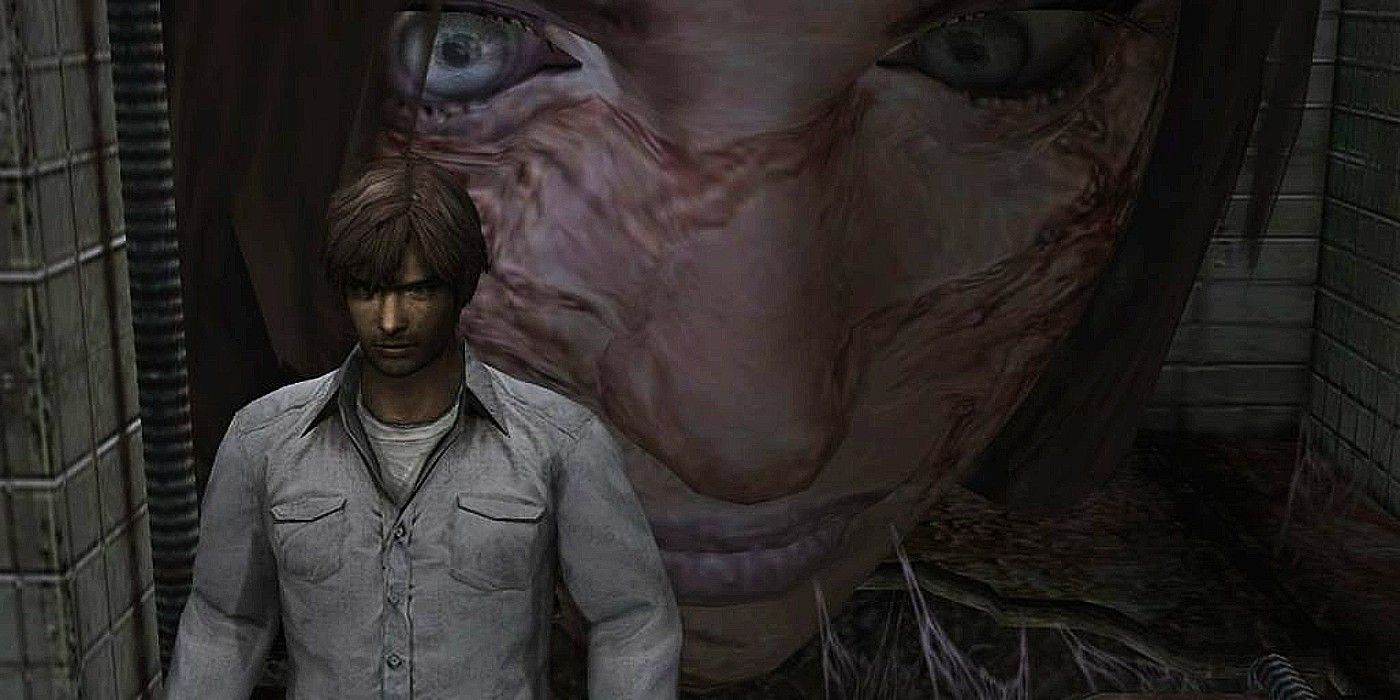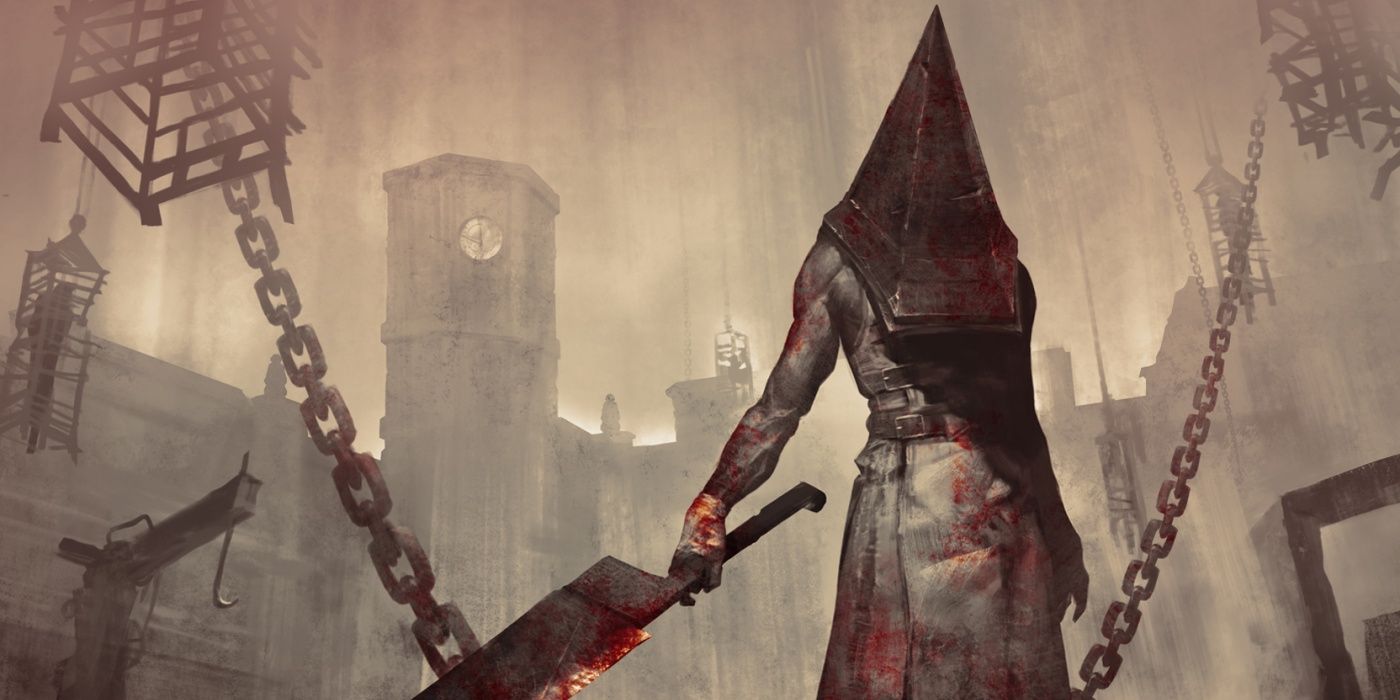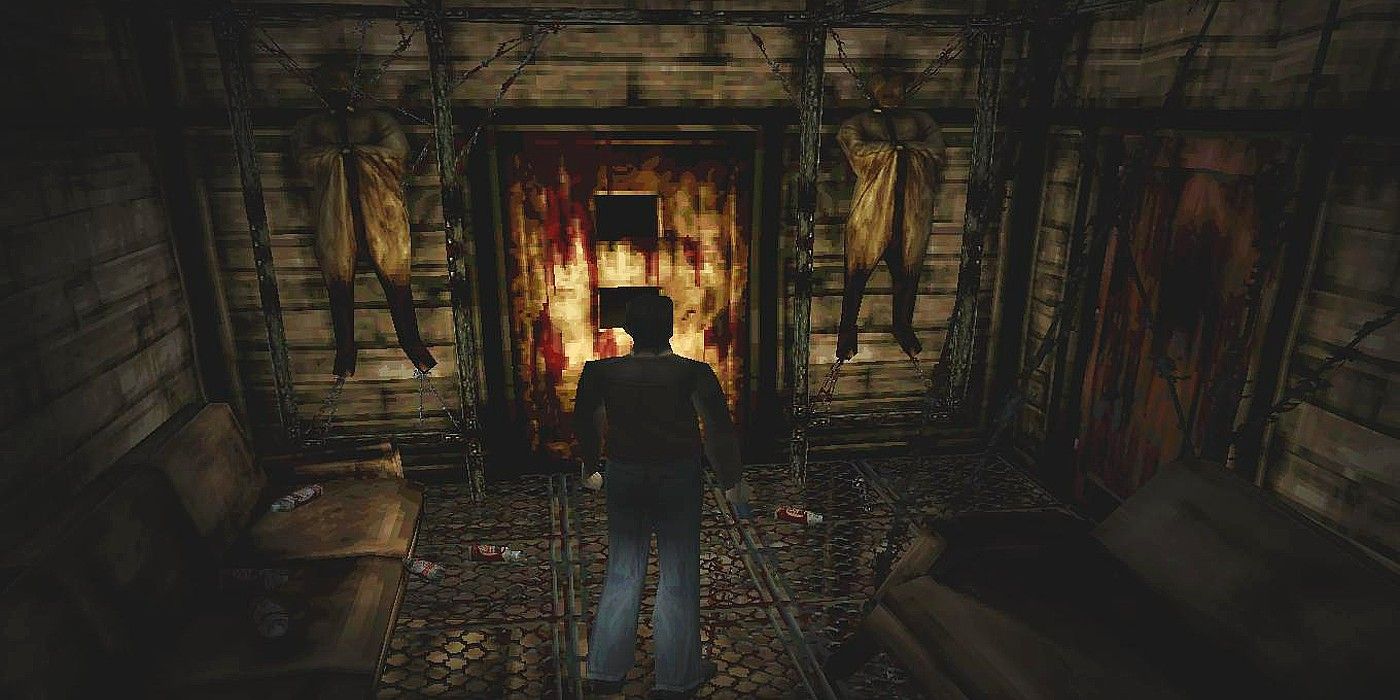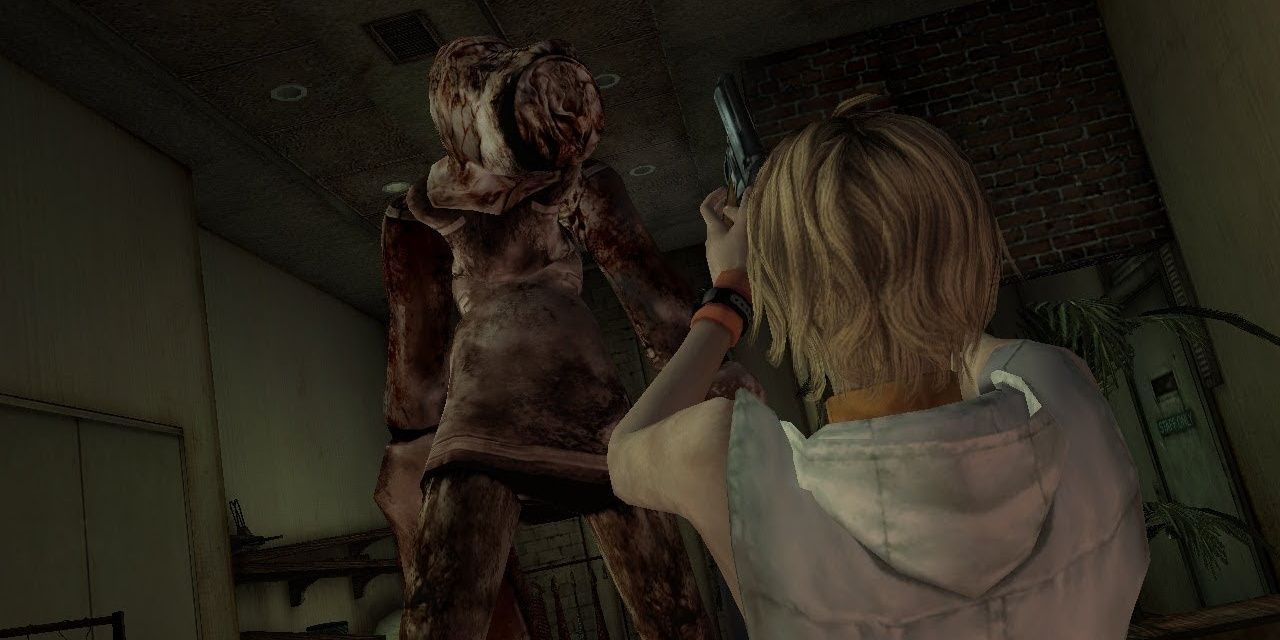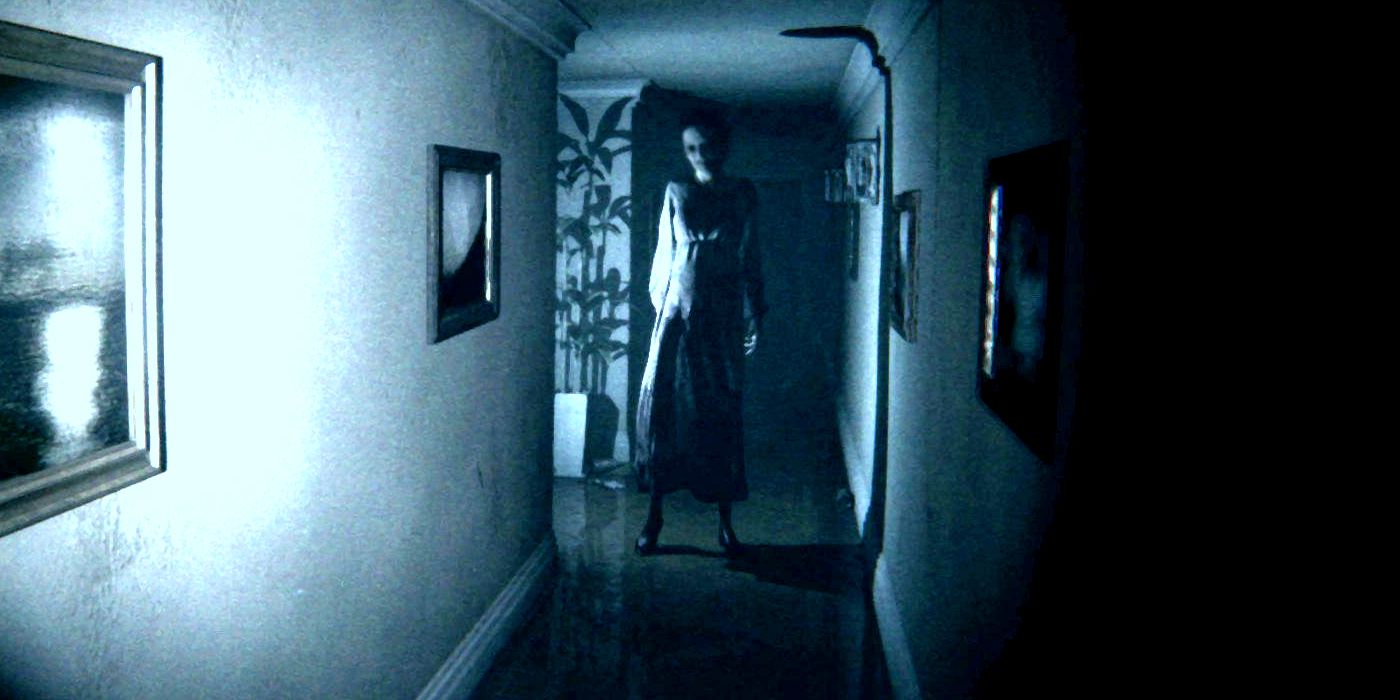The Silent Hill series is one of the most venerated horror franchises gaming generally, but while it can be both scary and deeply unsettling at its best, not all of its individual releases are created equal, and it's up for debate which is the scariest out of every Silent Hill game. With nearly 20 titles to consider, it would be an overwhelming task to analyze every last one of them, but it's easy enough to identify the handful that have stood the test of time to remain the scariest.
Silent Hill has had plenty of time to work out scares in different ways, leading to games that range from its core survival horror to interactive novels and action games (to say nothing of the novelizations and feature films it's also produced). While some of its spinoffs and side entries have been interesting in their own right, it's the core games that have largely made up the scariest entries in the series, and among those, it's the creations from the original Team Silent at Konami that have been the most consistently compelling.
That said, there are plenty of Silent Hill games that aren't particularly scary but are still well worth playing, and "scary" itself can mean different things in the context of the franchise. Some games may end up being more immediately frightening in the traditional sense, while others fall more into the "deeply unsettling" kind of horror. Either way, there's a little something for everyone, and Silent Hill remains a unique horror brand unlike most of its peers.
Silent Hill: Shattered Memories Is The Least Scary Silent Hill
Among the mainline Silent Hill games, Shattered Memories is woefully underrated, particularly because of how it handles its narrative, retelling the story of the first game in a completely new way. Originally for the Wii and later ported to the PS2 and PSP, it offers a number of experimental ideas for the series. Not a remake, and not exactly a reboot either, it takes a much more introspective approach to horror storytelling that's far softer and more thoughtful than one might expect. This does make the game worth playing, but it also makes it among the least scary of Silent Hill's many offerings.
With an icy artistic theme and generally boring enemy design, it's the game's unique ideas and interactivity that make it special. While the monsters aren't overly interesting, they can physically change into different forms over the course of the game via the "psychological profile" built for the player as events unfold, which is constructed in part from answering questions during interviews with a doctor (something that would later become a core part of the storytelling in Supermassive Games' campy slasher Until Dawn). It's also noteworthy as being designed and written by Sam Barlow, who would go on to write and direct FMV classic Her Story and 2022's breakout hit Immortality.
Silent Hill's Homecoming, Downpour, & Origins Are Among Its Least Scary Games
It might come as little surprise to most fans, but while these games all have their arguable merits, they're not developed by Team Silent, instead being worked on by studios Konami contracted after the company dissolved the team. Barlow's Climax Studios created Silent Hill Origins in addition to Shattered Memories, though Origins was a much more straightforward take on Silent Hill that acted as a prequel to the original title.
Homecoming (Double Helix Games) and Downpour (Vatra Games) were in the classic survival horror tradition, but despite this, they simply lacked the conviction of the first four games, following the formula too closely at times and taking chances in the wrong directions at others. Particularly noteworthy is that the monster designs of all these titles show little of the same visceral, gut-wrenching elements of the best Silent Hill games, which goes a long way toward keeping the experiences more staid. While still worth playing for fans, they are neither as frightening nor as unsettling as the games that came before them, and Konami's decision to seek western developers seems largely to have been what spelled the end for the series.
Silent Hill 4: The Room Is One Of The Franchise's Coolest Concepts
Silent Hill 4 is a fairly unsettling game, and its core concept of a man trapped in his own apartment, unable to escape but for weird portals to nightmarish locations, is highly effective. The problem when it comes to scares stems from its development, where the team wanted to employ new ideas and take the series in a different direction. This works well in the case of the titular room itself, there are a variety of quite strong characters that make Silent Hill 4 worth revisiting, and some gameplay elements also provide interest, but inconsistencies across the board and a somewhat disjointed feel keep it from achieving its ultimate potential. Had it been a little more cohesive, it might have ranked among the series' scariest games, but as it stands, it's still a weird and compelling game that fares better than most of the games that came after it.
Silent Hill 2 Is A Story That Favors Thoughtfulness Over Fright
Silent Hill 2 is considered by many to be one of the best horror games ever made, and rests firmly at the top of the series for many fans. Rumors and subsequent leaks point to a Silent Hill 2 remake being in the works, likely headed by Bloober Team, and it makes sense given its legacy that this would be the game Konami would look to remake. But for all its strengths, Silent Hill 2 doesn't take its scares above and beyond, with an emotional, thoughtful story that dials down some of the more disturbing elements that more heavily populate Silent Hill 3 and the original game. A host of surprisingly listenable music pops in and occasionally tones down the more discordant noise as well. That said, Silent Hill 2 certainly has no shortage of creepy vibes, more than a few scary moments, and some fantastic monster designs that elevate it above many games in the series, including the iconic Pyramid Head.
Silent Hill's Original Release Is Still A Horrifying Nightmare
In the end, Silent Hill 2 doesn't deserve a remake as much as the very first game in the series, and truth be told, it's difficult to determine whether Silent Hill or Silent Hill 3 is the scarier game. The first game was, for many, a terror like no other when it first released, because there really wasn't anything else at all like it on the market. Resident Evil had a similar baseline control and camera concept, but its brand of horror couldn't have been more different. The elements all come together perfectly in the first Silent Hill: a creepy abandoned town, a nightmarish Otherworld whose arrival was signaled by air raid sirens, and a story that leaves unsaid more than it concretely reveals. The combat is intentionally clunky, driving home that protagonist Harry Mason is an Everyman, not a soldier or even a particularly rugged individual, and the urgency of his quest to save his daughter brings an emotional edge to an increasingly terrifying story. The enemy designs don't stand out nearly so much as the environments themselves, which were the stars of the show, along with a downright jarring soundtrack that's enough to shatter anyone's concentration and resolve during a late-night play session.
Silent Hill 3 Is One Of The Most Disturbing Horror Games Of All Time
Where Silent Hill 2 is its own self-contained story following an entirely new set of characters, Silent Hill 3 follows protagonist Heather Mason and acts as a direct sequel to the original game. This continuity is also what allows it to be one of the most frightening Silent Hill games. Where the second game toned down some of the imagery or used it in different ways, with environments that have a tendency to feel more grounded (outside some standout moments), Silent Hill 3 instead dives hard into the dual-world ideas of the first game
Some of its monster designs are fantastically awful, from Valtiel, the dark creature seen turning his symbolic valves during Otherworld shifts, to the monstrous Closer with its huge meat-bandage arms, and bosses like the Glutton and the abortive god at the game's close. Drawing on the disturbing designs from the second game and catapulting them even further, coating them in even more ruddy orange rust and blood, Silent Hill 3 captures the totality of the horror, raw sadness, and distressing beauty that define the series. It doesn't have quite the same soundscape of sheer aural chaos the first game does, but it's also got some of Akira Yamaoka's biggest bangers on its acclaimed soundtrack.
Silent Hills P.T. Demo Is A Masterwork Of Interactive Horror
While P.T. isn't a full Silent Hill game, and no one knows what the Playable Teaser for the Silent Hills collaboration between Guillermo del Toro and Hideo Kojima would have ultimately come to look like as a final product, this short demo itself is so strong it became a cultural phenomenon, informing the horror genre as powerfully as the original Silent Hill games did in previous generations. P.T. vibes in The Mortuary Assistant and other games that take a more indirect approach to horror show just how influential P.T. has become, helping to shepherd horror games into something more than just gore and monster combat. . It is a true tragedy that the full game never came to fruition given the scope of its demo's influence. Its effect on the genre could well have gone on to be earth-shattering.
P.T.'s short runtime is matched by an equally short lifespan, as the demo was taken down and made unavailable by Konami. The company severed ties with Hideo Kojima in a public spectacle that shook the gaming world to its core. The event left the fate of Silent Hill and other favorite Konami IPs looking grim, and it seemed Silent Hill might be the sole purview of pachinko machines, along with other Konami games, as the publishing giant took big strides away from home console gaming generally. It's hung on with an almost vengeful fervor in the public eye, however, as the name still conjures up the spare, concentrated horror fans have loved it for.
P.T. may not be a full Silent Hill game, but its influence on the industry as a whole is undeniable, and a single playthrough makes it easy to see why. With a tiny environment to explore that opens up and shifts back on itself in a variety of ways, it evokes the sensation of being trapped inside a nightmare, with a slow crescendo from relative normalcy to outright madness. What's perhaps more notable is the psychological nature of the experience, with dismaying imagery and narrative elements that make for a deeply uncomfortable experience, all with a general lack of monstrous creatures to propel it. Fans may wish Silent Hill was dead thanks to Konami, but this feeling is only amplified by how much promise Silent Hills seemed to show.
Lisa, the demo's sole antagonist outside of the twisting environment itself, makes few appearances, but does so to alarmingly potent effect when she chooses to make herself known. Players are tasked less with fighting her or even exploring the environment so much as attempting to piece together disparate bits of a sparse narrative and finding the mechanisms that will push it forward to its conclusion. More mundane gameplay is set against a backdrop of a treacherous environment and a player character whose identity and unpleasant past seem to weave P.T.'s horror of their own accord, and this balance has proven to be far more horrifying than any monster chase or jump scare. Avoiding the worst horror movie and game tropes, Silent Hills might have taken the top slot for terror in a series already filled to the brim with it. As it stands, all one can do is remember P.T. and wish for what might have been.
Silent Hill as a series has seen many ups and downs, and it hasn't always been treated with the reverence it deserves, either by its original publisher or the subsequent hands into which it was delivered. P.T. alone proves that there's still potential hope for the franchise if given to the right team, but it's also the exception that proves the rule - one can't help but wonder whether any western developer, without the otherworldly talents of Akira Yamaoka, Masahiro Ito, and Hiroyuki Owaku, can ever recapture the magic that made the first four Silent Hill games such an enduring part of horror gaming history.
Source: Survival Horror Network/YouTube

